Many people who want to study the starry sky, believe that this requires a telescope. Of course, this is not so – it is possible to study constellations even without a telescope, armed with a star map and what nature has given us – with our own eyes. However, if you want to study well the constellations, the location of bright clusters, nebulae in them, if you often visit places where there is no light pollution, but you cannot take a telescope with you for one reason or another (for example, for a hike or a walk) – I recommend to pay attention to the wonderful optical device called binoculars.
So, what kind of binoculars is better to take a novice? What do the numbers in the marking of binoculars? What can you see with binoculars in the night sky?
Binoculars are two small refractor telescopes installed in parallel. Like a telescope, it has a lens, an eyepiece, but an important difference from a telescope is the presence of a erecting system of prisms. Non-inverted image allows you to comfortably use binoculars when observing both terrestrial objects and celestial objects (no need to turn the map over), while most telescopes provide an inverted or mirror image.
Depending on the type of erecting system, binoculars come with a roof system (Roof) – they look like binoculars with “straight tubes” or Porro system (several crossed rectangular prisms) – they look like binoculars with “eyes spread”. Porro-prism binoculars provide a more stereoscopic image when observing terrestrial objects, but noticeably more in transverse dimensions than binoculars with Roof-prisms.
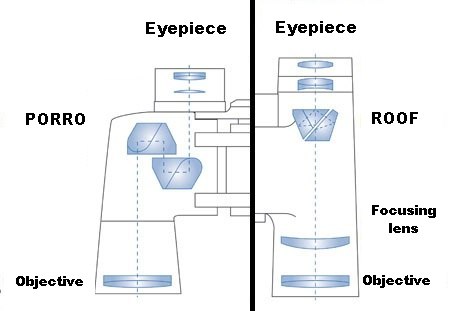
There are also low-field binoculars made using the Galilean system (the lens is a collecting lens, and the eyepiece is a scattering lens) — the Galileo Galilei telescope was made using just such a system. They do not need a erecting system – the image in them is direct, but obtaining a large multiplicity with a large field of view is problematic for them, therefore binoculars with a similar system are used where large image magnification is not required (from 2.3 to 4x) – for example, for observations in the theater. Example of such binoculars – ZOMZ BGSH 2.3×40.

The main characteristics of binoculars are the magnification, the diameter of the lens (aperture), the field of view of the eyepieces and the removal of the exit pupil (eye relief). Also an important parameter, which is usually not specified, but which is easy to calculate, is the exit pupil.
The magnification and diameter of the lenses are usually indicated in the marking: the first digit is the magnification, the second is the diameter of the objective lenses in millimeters. For example, 7×35 binoculars are binoculars with a magnification of 7 times and a lens diameter of 35 millimeters. If we look through binoculars with a magnification of 10x at an object located at a distance of 100 meters, then we see this object 10 times closer than it actually is (in this case 100 meters: 10 times = 10 meters).
The task of any binoculars or telescope is to concentrate all the light that enters the lens, into a small circle, which from the eyepiece will fall into the pupil of the observer. This smallest circle of concentrated light is the exit pupil. In fact, the lens is the entrance pupil, and the fact that at the exit from the eyepiece is the exit pupil.
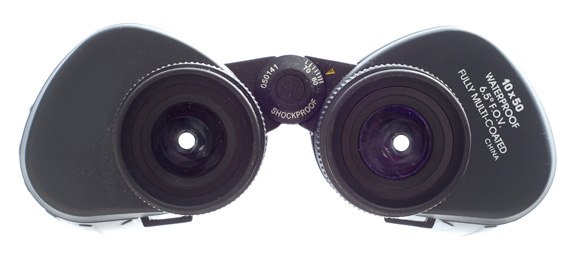
To calculate the value of the exit pupil, it is necessary to divide the diameter of the binoculars lens by magnification. 7×35 binoculars have an exit pupil of 35:7 = 5mm. Why do you need to know this parameter? The diameter of a person’s pupil can vary from 1.1 to 8 millimeters, depending on the lighting conditions – the pupil expands in the dark, and narrows in bright light. If the size of the exit pupil of the binoculars is larger than the pupil of the eye, then simply not all the light will fall into the pupil and part of the lens will not be used. For example, if binoculars with 7×35 parameters (exit pupil 5mm) will be used exclusively during the day, when the pupil of the eye has a diameter of about 2mm, only 2×7 = 14mm from the lens diameter will be used. The conclusion is that – for daytime observations, binoculars with an exit pupil of up to 4mm are needed, for nighttime (including astronomical) pupils with an exit pupil of 5 to 7mm.
Eye relief is the distance from the eyepiece lens to the eye, at which the entire field of view of the eyepiece is visible. When the eye relief is too small, it is necessary to “stick” the eyes into the eyepieces. If you have poor eyesight and you want to watch with glasses – it is better to take binoculars with a large pupil removal – about 17 mm. However, a comfortable removal of the pupil is approximately 12 … 15 mm. If you have myopia watching is not necessarily with glasses – just refocusing is enough. If you have astigmatism, it is advisable to use glasses.


No less important parameter is the field of view of the eyepieces of binoculars – it can vary from 45 to 80 degrees. The real field of view of binoculars – the size of the area in the sky, which can be seen in the eyepiece – can be calculated by dividing the field of view of the eyepieces by magnification. 7×35 binoculars with a field of view of eyepieces of 60 degrees will provide a visible field of view of 60: 7 = 8.6 degrees. For comparison, the angular size of the Moon is half a degree, that is, 17 moon disks fit in the field of view of binoculars. Binoculars with a field of view of eyepieces of more than 60 degrees are called wide-angle. If you compare two binoculars – one with a field of view of the eyepieces of 70 degrees, the second – with a field of view of 45 degrees, then looking through the second binoculars after the first will look like a “keyhole” – the image will be noticeably limited by the black field around. And on the contrary, looking through wide-angle binoculars with a field of 72 … 80 degrees seems to be a glimpse of a spacecraft window, when the edges of the field of view are either not visible, or they practically do not catch the eye. However, it should be noted that the quality of the image in wide-angle binoculars at the edges of the field of view may be poor, and instead of point stars you will see “birds” and “comets”

The more magnification in binoculars, the more pronounced the trembling of hands. Also, large and heavy binoculars quickly get tired hands, which also increases the trembling. I recommend installing binoculars with a magnification of more than 10x on a photo tripod with a special adapter (L-adapter). If you plan to watch exclusively with your hands – I recommend limiting it to a factor of 10x.
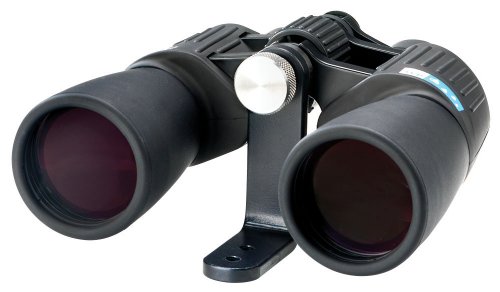
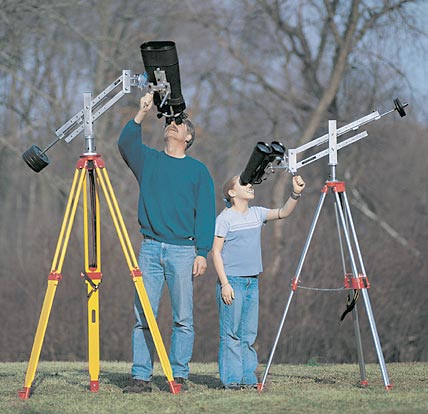
There are also image stabilization binoculars – for example, the Canon 10×30 IS. Such binoculars are very convenient when viewed from the hands, but their price is significantly higher than on binoculars without stabilization.
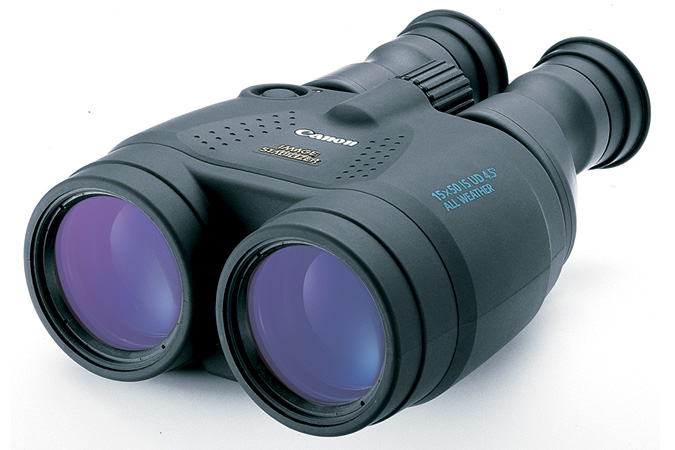
What to check for when buying binoculars?
1) To look into the lens of binoculars, on the prisms should not be dust, chips, drops of glue and debris.
2) The eyepiece assembly (focusing mechanism + eyepiece attachment) should not be too flimsy.
3) When observing through binoculars, the eyes should not get tired. Set a comfortable interpupillary distance, focus on a distant object and watch. If after the observation the eyes hurt and the head is spinning, it is possible that the optical axes of such binoculars are not parallel. This is better not to take binoculars. Try another binoculars, perhaps from several binoculars it will turn out to choose one with normal collimation. It is very easy to check the alignment between the stars – aim at the bright star, focus the left eyepiece so that the star is clearly visible, and then defocus the right eyepiece (most binoculars provide an additional correction for one of the eyepieces). In the left eyepiece the star will be visible as a point, and in the right – as a circle, the star should be kept exactly in the center of the field of view. If the star-point is visible exactly in the center of the defocused star, then the axes are parallel. If the star is to the left or to the right, then the horizontal alignment is broken. With small angles of divergence it is not scary, the eyes automatically reduce two images into one. If the star-point is above or below the star-ball – this is a violation of vertical alignment, and this is bad – such binoculars are better to return or exchange, otherwise you will get headaches and tired eyes. Health is more expensive!
4) The exit pupils should be round. If the exit pupils are square, then a part of the aperture of the binoculars is pruned with prisms, and you actually have binoculars, for example, not 7×50, but 7×40, although the objective lenses can correspond to the stated diameter. I also advise you to measure the entrance and exit pupils of binoculars with a ruler to eliminate the hidden diaphragm of the aperture.
5) Do not order binoculars in the online store for prepayment – binoculars must be checked PERSONALLY for the points above, up to a choice of several copies. Believe me – in the store you can be “put in” a marriage or illiquid asset (either consciously or not having enough experience to check binoculars).
From manufacturers I can recommend Nikon, Olympus, Pentax, Fujinon, Minolta, Delta Optical. Also I recommend to pay attention to the old Japanese binoculars. Let me remind you once again – be sure to check your binoculars before you buy!
For hand-held observations, choose binoculars with a multiplicity of up to 10x (7×35, 7×50, 8×40, 8×56, 10×40, 10×42, 10×50), and for observation from a tripod – binoculars 15×70, 20×60, 20×80, 25×100.
Have a good shopping!
